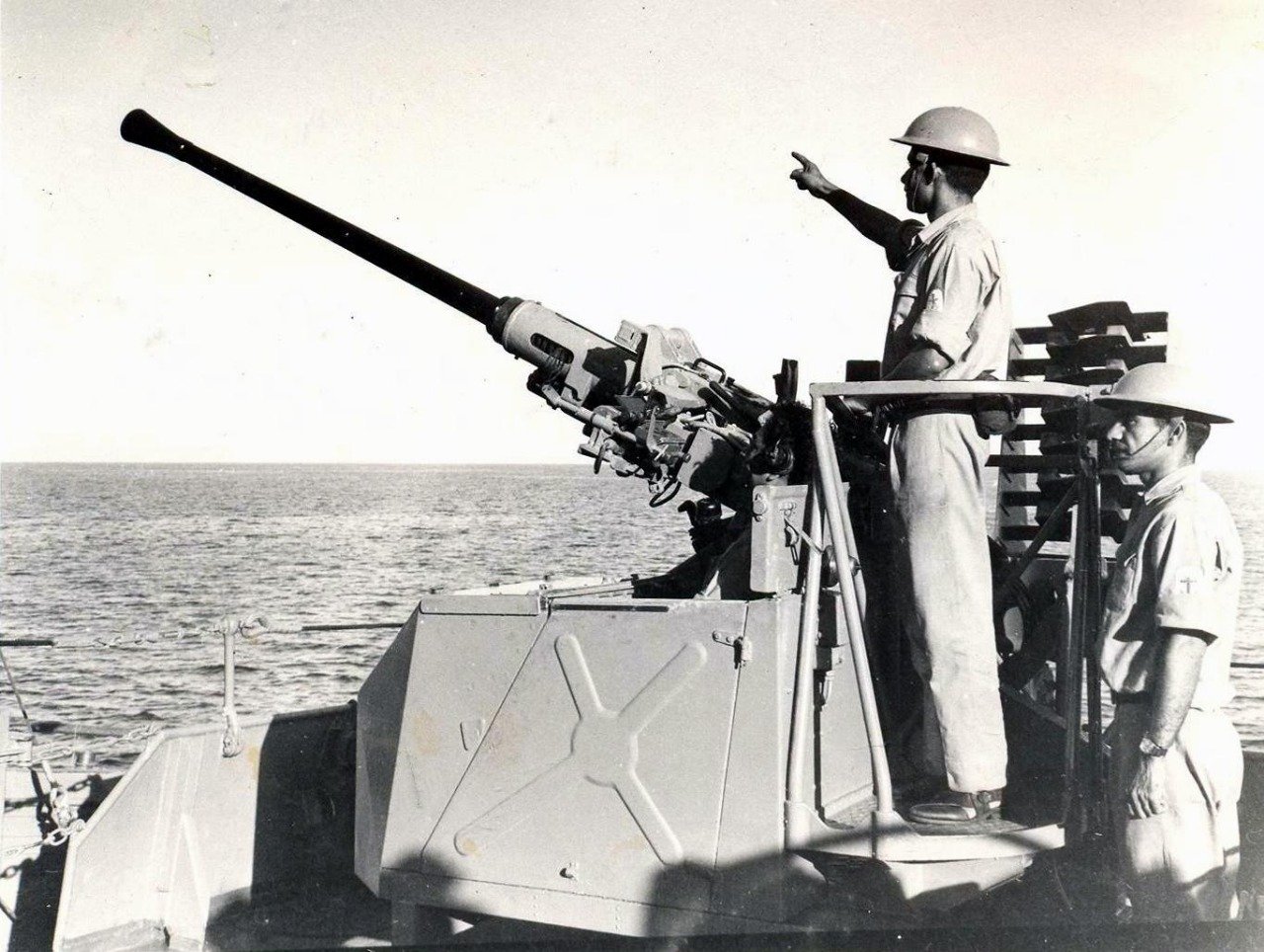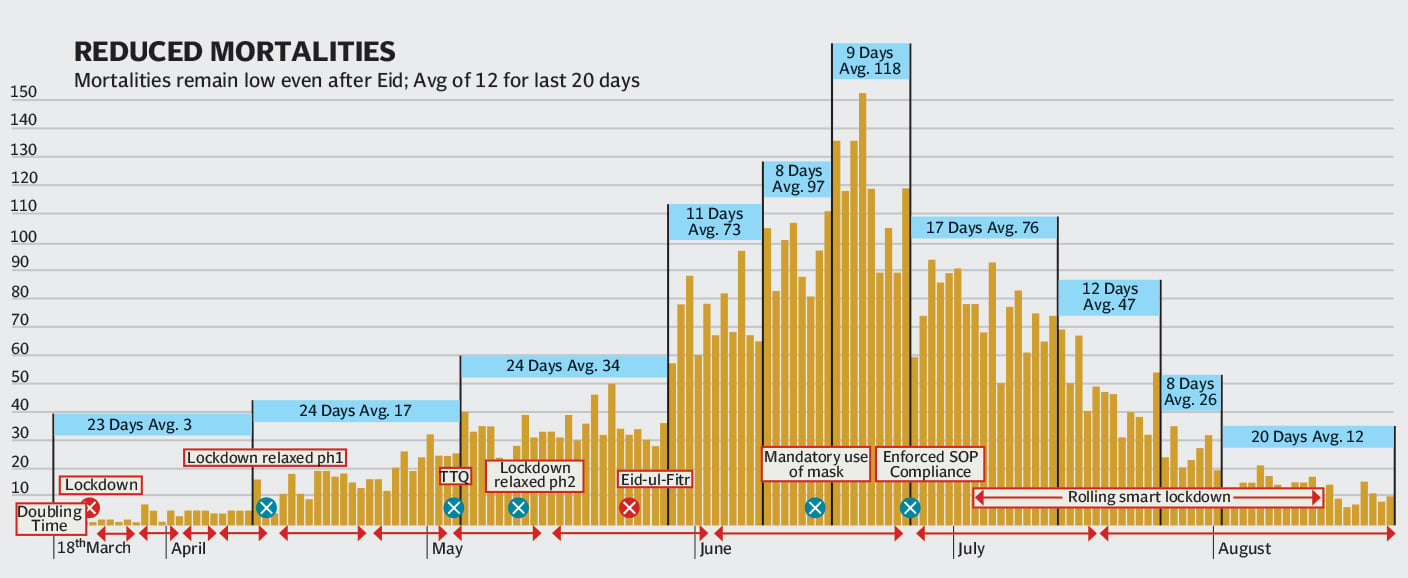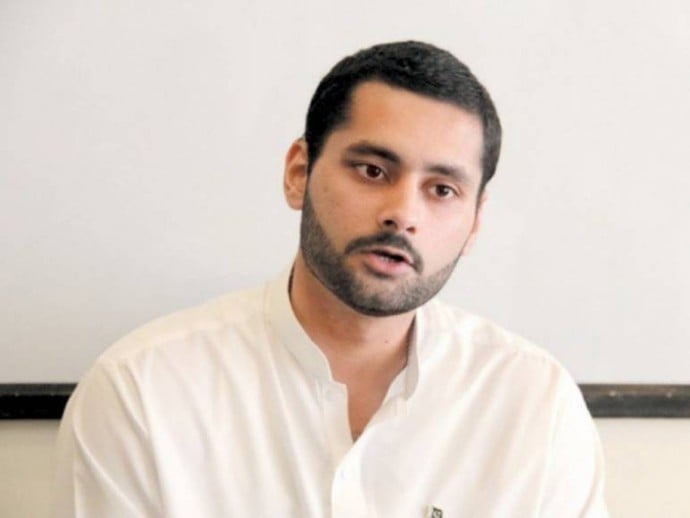1965: A WAR
A TRIBUTE TO THE NATION'S HEROES
Chronicles of insurmountable defence
Information from the 1965 war archives reveal how the conflict unfolded day by day
Our Correspondent
Karachi
As sudden as India’s failed 1965 offensive against Pakistan was, the build-up leading to it had been underway for much of the year. New Delhi had been creating war hysteria as early as April that year, and had positioned its troops close to the Pakistan border. Around two months later, in June, the Pakistan Air Force intercepted a trespassing Indian Air Force Ouragan fighter jet, forcing it to land near Badin.
Meanwhile, the Indian government had initiated a campaign of harassment aimed at Pakistanis who visited India. Seven Pakistanis were arrested in Kanpur on flimsy grounds by Indian authorities, even though they had been visiting their relatives with all required valid documents.
The incident came after then Indian defence minister Y B Chavan admitted that the Indian army had been finding it ‘very difficult’ to stifle the struggle of Mujahideen in Illegally Occupied Jammu and Kashmir (IIOJK).
Set on a collision course
On Sept 1, Indian forces attempted to build up pressure in the Rajauri, Mandi, Sona Marg and Srinagar sectors. According to India’s own account, its forces suffered heavy losses and humiliation at the hands of Azad troops.
Then information minister of Pakistan, Khawaja Shahabuddin, issued India a warning: if its forces continued aggressive actions across the ceasefire line in Kashmir, Pakistani forces would have no choice but to retaliate. His words went unheeded.
At 5:19 pm, four IAF Vampire fighter jets took off from Pathankot and entered Pakistani airspace to attack Pakistani ground troops. To their utter surprise, the intruders were welcomed by two PAF F-86 Sabres. All four Indian aircraft were shot down in an episode so demoralising for the IAF that withdrew all 130 Vampires from frontline service.
Admitting the loss the next day, Indian PM Lal Bahadur Shastri continued making threats towards Pakistan. Responding to the provocations, then president Ayub Khan addressed the nation. “Indian policy towards Pakistan and Kashmir from the very beginning had been set on a collision course,” he said, as he warned Delhi it would be alone responsible for consequences. The GHQ ordered all formations to occupy concentration areas if hostilities escalated.
In 1965, the Indian military seriously outnumbered Pakistan armed forces. India had three times the strength in terms of numbers when it came to infantry, air force and navy. Even so, India’s military performance did not live up to its strength on paper. On September 2, Kashmiri mujahids wiped out an entire Indian platoon while assaulting Indian positions, convoys and military installations. Azad Kashmir Forces, with support from the Pakistan Army, also pressed ahead unchecked in the Chhamb, taking 150 POWs and capturing 15 Indian tanks.
On Sept 3, Shastri addressed his nation again. Fearing that Pakistan could launch its own air raids, he told the people of India to brace for hard days.
Meanwhile, a senior Pakistan Army officer single-handedly captured 30 Indian soldiers. Armed with just a pistol, Lt-Col Naseerullah Babar mistakenly landed his helicopter at an Indian position in Bhimbher. However, Displaying exceptional presence of mind, he convinced the enemy troops that it was they who were surrounded.
The day also saw another intense air battle that resulted in three out of six intruding IAF aircraft shot down. A fourth was forced to land at the Pasrur airfield and only two intruders made it back home.
On Sept 4, India revealed its true intent. The country’ foreign minister, Indira Gandhi, announced: “ India wants a showdown… to settle the Kashmir issue once and for all.”
The GHQ directed all Pakistani formations to take defensive measures. In the Jurian sector, a platoon commanded by 2nd Lieutenant Shabbir Sharif charged a strongly held enemy position again and again. His third attempt broke through enemy lines, and he was awarded the Sitara-e-Jurrat for his leadership and courage.
The PAF, meanwhile, drove back 40 Indian warplanes as they attempted to intrude Pakistani airspace. To ward off any Indian threat from the seas, Pakistan also deployed its first long range submarine, PNS Ghazi.
After a night of fierce fighting, the Jurrian sector fell to Pakistani forces under Maj-Gen Akthar Malik on Sept 5. The victory also brought Pakistani troops within three miles from Akhnur, another vital point for Indian forces. At the same time, PNS Ghazi was in position to attack Indian Navy cruiser INS Mysore and its escorts.
‘Full scale war’
On September 6, Shastri declared ‘full-scale war with Pakistan’. At 0400 hours, Indian forces crossed the border, launching attacks on Lahore, Sialkot and Kasur.
Pakistani troops repulsed the three-pronged Indian attack, inflicting heavy casualties. At Wagah and Bedian, a number of Indian soldiers were captured, and several Indian tanks and artillery positioned at the Lahore front were destroyed.
As Jassar, from where India launched the Sialkot offensive, Pakistani troops dislodged Indian troops from a Ravi river enclave. As many as 200 Indian soldiers were confirmed to have died in the battle, with unofficial estimates suggesting an actual toll as high as 800.
India suffered a crushing defeat at Chhamb as well, with 35 Indian soldiers made POWs and several Indian tanks and artillery cannons captured.
The PAF launched a daring airstrike on Pathankot Air Base, annihilating 22 Indian warplanes on the ground.
Pakistan forces pushed the invaders back the next day, inflicting heavy losses. The PAF also destroyed another 31 Indian warplanes. The Indian spokesperson was forced the admit the offensive was halted, but threatened to open a front on East Pakistan.
Driven to desperation, Indian forces launched attacks on non-military installation on Sept 8. IAF targeted hospitals and courts in Wazirabad, Chiniot, Sargodha and Sialkot, while India dropped paratroopers near Rawalpindi, Lahore, Shahdara, Wazirabad, Jhelum, Sukkur, Badin and Karachi. The airborne troops, however, lacked conviction to fight and were taken captive.
Pakistan Army, meanwhile, repulsed another Indian attack on Lahore, Sialkot and the country’s desert regions, knocking out 21 Indian tanks.
PNS Ghazi took the fight to Indian shores, destroying a radar station at Dwarka. Meanwhile, PAF bombers carried out accurate raids on IAF bases at Halwara and Jodhpur, reducing India’s air strength by a fifth.
India in disarray
By Sept 9, India appeared in disarray. A serious rift emerged between its PM and president, and Delhi ordered the arrest of 500 Pakistani visitors in hubris.
Pakistan continued to push Indian troops behind the border, with decisive blows at Wagah, Kasur, Sialkot and Gadaro. The PAF, meanwhile, maintained complete air superiority, destroying 28 IAF warplanes in dogfights, 26 in air raids and two using AA guns. The PNS Ghazi kept the Indian Navy from reacting the loss at Dwarka.
India’s defence minister accepted severe armour losses on Sept 10 and admitted Indian troops had been pushed back from Kasur. The PAF shot down two more IAF planes over Lahore, the ever-increasing losses dividing the Indian government into two camps. India began air raids in East Pakistan.
On September 11, Pakistani forces launched a swift limited offensive against Indian troops poised for another attack on Kasur and Lahore. After fierce fighting Pakistani troops captured Khem Karan, before fighting back a desperate Indian counter attack.
Pakistani forces also halted an Indian advance on the Hariki-Burki road, and captured positions in the Chhamb-Akhnur and Sindh-Rajasthan sectors. As many as 36 Indian tanks were knocked in the Sialkot sector. The PAF, meanwhile, destroyed the entire Indian MiG-21 fleet at Halwara, and two fighter-bombers at the Bagh Dogra airbase in West Bengal.
Between Sept 11 and 12, India launched eight major attacks in the Lahore sector and the heaviest tank offensive in the Sialkot sector. Despite encountering heavy fire from tanks, Maj Aziz Bhatti continued to direct artillery and embraced martyrdom, as the troops he commanded held firm. He was honoured with the Nishan-e-Haider.
In the Sialkot sector, Pakistani forces destroyed 45 enemy tanks and captured many posts in Sulemanki. Similarly, Pakistani troops captured a post well inside Indian territory in Chhamb sector. As many as 350 Indian soldiers surrendered in Khem Karan as well.
Dominating the battlefields
On Sept 13, Pakistan Army pushed back an Indian advance and captured the Munabao railway station. Pakistani troops also repulsed Indian attacks in the Sialkot sector with heavy losses. In the air, PAF shot down six IAF cargo planes and a Gnat fighter.
Another Indian attack in the Lahore sector was repulsed the next day, and the enemy fled leaving 150 dead and 300 wounded behind. Pakistani troops captured another post in the Gadaro sector and continued to shell Indian positions in the Sialkot-Jammu sector.
Indian launched another attack in the Sialkot sector on Sept 15, but encountered more heavy losses. PAF continued to pound Indian forces from the air, destroying 22 tanks and 51 vehicles.
On Sept 16, Pakistani troops, supported by PAF, halted Indian attacks in the Sialkot-Jammu and Wagah-Attari sectors. India lost 36 tanks in the failed offensive. In the Gadaro sector, Pakistan troops continued to push ahead well inside Indian territory. Separately, the PAF shot down two IAF Hunter jets.
On Sept 17, IAF warplanes targeted a civilian train, killing 20 Pakistani passengers in the cowardly attack. Meanwhile, Pakistani troops continued to dominate Indian forces in Khem Karan, Sialkot and Chhamb. Over the next five days, Indian forces continued to suffer heavy losses to sustained pressure from Pakistan Army and Air Force.
On Sept 18, Pakistani troops took over the Rajput fort of Kishengarh in Rajasthan. On Sept 20, PAF bombers carried out more accurate strikes on IAF bases in Ambala, Jodhpur, Jammu, Jamnagar and Halwara.
On Sept 22, President Ayub announced Pakistan had accepted the UN ceasefire resolution, which Indian PM Shastri to called a ‘sigh of relief’ for Indian forces. Even so, India launched last ditch attacks in the Wagah-Attari and Khem Karan sectors the next day, but failed to make any gains as Pakistani forces held firm in defence.
National spirit
Looking back on Pakistan’s greatest strength
Where artillery and infantry are significant to wars, the secret to Pakistan’s success in 1965 was its leadership and unity
Khalid Mehmood
Islamabad

A nation divided is perhaps on the shortest end of any war. It has little chances of winning against its foes, when it is struggling to win over its own people. In retrospect, the Islamic Republic’s greatest advantage in the Indo-Pakistan war was not the scale of its artillery or the numbers in its infantry. It was its ability to bring the nation under a single, united front. Five-and-a-half decades later, as border tensions grow, the country is once again in need of the same national spirit of unanimity that it had coursing through its veins on the eve of 6 September 1965.
“India had already blitzed into Azad Kashmir, where a majority of our troops were engaged. Later, seeing the opportunity, they also attacked Chamb Jooriyan and then set their sight on Lahore. We were ambushed from all sides and the enemy was eyeing an entry into Lahore through the Wazirabad Rad. However, that is when Pakistan turned from a country into a nation united. Our naval forces went some 1349.9 nautical miles into Indian Territory and hit a significant target, beating India in its own game,” recalled Lieutenant General (rtd) Khalid Lodhi. “If one reads through the pages of history, there is a lot that we can learn from Pakistan’s victory in 1965,” he added.
On the other hand, speaking to The Express Tribune General Talat Masood said that while national spirit is imperative, it is equally important for a country to be equipped with state-of-the-art defense machinery in today’s day and age. “Undoubtedly, there was terrific leadership and intelligence back then, which primarily enabled Pakistan to win against all odds. Although we still retain a brilliant intelligence and the mightiest of forces, but even after 55 years Pakistan has struggled to maintain adequate finances. The word around us has progressed but are still strapped for cash and dependent on foreign nations for aid, which can prove unfavorable in times of crisis.”
According to the military veteran, the county is in dire need of improving its economy, now more than ever, that the vision of war has changed. “In 1965, the spirit of patriotism was still fresh from the days of partition. People back then, be they military or civilians, knew firsthand what freedom meant and the struggles went into achieving it. Today, we are far ahead in terms of artillery, infantry and leadership. All we need is financial independence and the same spirit of nationalism that we experienced in 55 years ago.”
Harking back to the events of 1965, Pakistan Army veteran General (rtd) Mustufa shared that he was a 10th grade student when the word of war first spread. “My father was a military man, so I experienced the war unravel before my own eyes. Back then, the army was the artillery and it was in fact the entire nation that was collectively fighting to defend its borders from enemy forces. There wasn’t an ounce of fear, we all trusted each other the utmost,” he recalled. “Although we were in the midst of a blitz, all ground-traffic, aircrafts and trains remained functional as per routine. We had limited weapons, and yet our air force managed to shoot down some 114 enemy aircrafts while the navy hammed the final nail in the enemy’s coffin in Chaunda. Today, our country needs to unite once again and stand firm under a single vision as we did in 1965. Our unity, is still our greatest strength.”
When Indian military paid for its hubris
Kashmiri leader urges Pakistan to respond decisively to all threats
Our Correspondent
Karachi
Pakistani troops marched into Indian territory, east of Lahore. They pushed the Indian army across the border at Wagah, completely decimating their opponent’s morale. The move sent shock waves all the way to New Delhi and beyond.
More than five decades later, each year, on 6 September, the Indian leadership is reminded of the resounding defeat it faced at the hands of Pakistan’s armed forces. While India has made several attempts to scrub history, Pakistan continues to commemorate the victory loudly. The war ended with an UN-sponsored ceasefire. The conflict, like all others that have happened since then, was fought over Indian Illegally Occupied Jammu and Kashmir (IIOJK).
In the occupied territory of Kashmir, Pakistan Army’s approval ratings have been high ever since. No attempts to dilute the history, by the Indian regime has ever succeeded.
“As a Kashmiri representative, I would say India must see how powerful Pakistan is as a nation and as a military force. It must learn from its mistakes,” cautioned Altaf Ahmad Bhat, convener of Jammu and Kashmir Salvation Movement (JKSM).
Recalling the details of the 1965 battle, Bhat said: “India can try all it wants, but the power and vigor of a Mujahid will always remain unmatched.”
During the conflict that lasted barely a month, Pakistan made gains in the Rajasthan desert. It captured a significant portion of territory and caused massive loss to the Indian army. Since then, Pakistan celebrates 6 September every year as "Defence Day" with a 21-gun salute and a grand parade.
Bhat said instead of learning a lesson, India continues to try its luck, and each time, it receives a stinging blow. “In 1965, India made a mistake, it repeated the same mistake recently by claiming it had attacked Pakistani territory in Balakot. And the rest is history,” said the Kashmiri leader.
“India fails to learn from its mistakes,” quipped Bhat, who openly criticizes the Modi regime for its actions in Indian Illegally Occupied Jammu and Kashmir.
Bhat said India should revisit history and review the performance of Pakistan’s military and air force. “The Pakistani air force was fully charged, and Indian side was unable to handle it,” he said.
The Kashmiri leader urged Pakistan’s military to respond decisively to any and all threats by India. He said India, under Modi, is only good at sabre-rattling, and nothing more. “Pakistan has one of the top trained military and India needs to know that before it plans its next military misadventure,” said the Kashmiri leader.
“Pakistan’s military must respond with full force once again to free Kashmir from the oppressive regime’s control,” urged Bhat.
In a direct warning to India, Bhat said, “Pakistan is an atomic power and a strong Muslim nation. India can never match that power,” he said.
Reminding India of the 1965 defeat, Bhat said, New Delhi must resolve the Kashmir issue as per the UN resolution that its leaders agreed. Otherwise, he said, India must prepare for another defeat and perhaps a regional war.
A vivid recollection of the 1965 War
People who survived the War remember the events that took place after the attack
Asif Mehmood
Lahore
Even after more than five decades, elderly people living in the border areas of Lahore still remember the events of the Pakistan-India War of 1965.
During the war, most of the area situated east of Lahore, from the Bambanwala-Ravi-Bedian (BRB) Canal to the border, was under Indian occupation but the Pakistan Army challenged the enemy despite their battalion being significantly bigger in number. After the defeat, the Indian Army had to perform the last rites of their dead soldiers on the Pakistani soil.
The Bhasin area of Lahore is located only a few kilometres close to the Pak-India border. The area was occupied by India during the 1965 Pak-India War, but only a day later, the Pakistan Army successfully recaptured the village. According to native elders of the area, firing started at 3 AM.
Recalling the day the war broke out, Abdul Ghafoor, an elder, said that when the firing started, he thought that the Rangers might be chasing smugglers.
“When the firing began to escalate, we realised that war had broken out. At first, the Pakistani planes responded to the Indian Army. Our planes dropped bombs on the Kanjari Bridge in India which had caused considerable damage to the enemy," he recalled.
Another elder, Mohammad Sadiq, said that he was about 13 years of age at the time of the 1965 war. “I remember that my mother woke all of us up 4 AM when the Indian Army attacked us. It was prayer time,” he said.
To respond to the Indian aggression, the Pakistan Army first damaged the bridge of the BRB Canal so that the Indian Army could not cross it. Those who remained on the other side of the canal were then taken to the other side by the soldiers.
Mohammad Sadiq said that most of the elders, women and children of the village had crossed the bridge successfully. Only some young boys were left behind who were assisting the Pakistan Army.
“They were mostly doing the legwork, like pick up boxes of bullets for the soldiers, bringing them food, or water. My siblings also told me that there was vast open space in the Bhasin area where the Mayo Community. All fallen soldiers of the Indian Armed Forces were cremated there.”
Muhammad Ahmad Khan, who was also a young boy in 1965, said that the war was over after 17 days but they returned to their homes after about nine months.
"Everything was destroyed. We lost our houses, shops, school. Nothing was left,” Ahmad Khan recalled. “The Indian Army even destroyed wooden doors, windows and roofs of houses. When we returned, there were rotten corpses, bones and weapons of Indian soldiers in the fields. It was a horrible sight. I can never forget it.”
He added that many families, who had migrated from India in 1947, had already seen the horrors of war and partition and had lost everything. With the India-Pakistan war of 1965, their properties and belongings were destroyed once again. “Nonetheless, these brave and resilient people living in the border area did not give up and rebuilt their homes. Thousands of cattle were also killed in the war,” he said.
The elders of the area said that unlike today when people have their licensed weapons, at that time, everyone had sticks and axes to fight. "If India makes the mistake to attack ever Pakistan again, then the people residing in the border areas will reply sternly," they stressed.
PRODUCED BY: ZEESHAN AHMAD
DESIGN: NIHA DAGIA
PHOTOS: ARCHIVE





































































